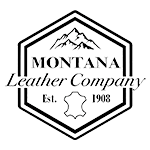No products in the cart.
Return to shopLeather Thickness and Conversion Chart
Leather thickness refers to the measurement of leather in ounces, although the unit does not refer to weight in any way. Measuring the thickness of leather is important in determining the flexibility, durability and overall suitability of leather materials. For leather crafters, knowing the correct leather thickness is crucial for the success of their projects, be it belts, bags, shoes or other leather crafts.
Leather Thickness Conversion Chart
One ounce of leather is equivalent to 1/64 of an inch. To make leather thickness measurements and conversions more convenient for crafters, we prepared this leather thickness chart:
| Ounce Thickness | Inch Thickness | Millimeter Thickness | Common Projects |
| 2 to 3 oz | 1/32 to 3/64 in | 0.8 to 1.2 mm | lining, embossing |
| 3 to 4 oz | 3/64 to 1/16 in | 1.2 to 1.6 mm | lining, embossing, light bags, light wallets |
| 4 to 5 oz | 1/16 to 5/64 in | 1.6 to 2.0 mm | wallets, bags, caps |
| 5 to 6 oz | 5/34 to 3/32 in | 2.0 to 2.4 mm | phone and tablet cases, book covers, light moccasins, chaps |
| 6 to 7 oz | 3/32 to 7/64 in | 2.4 to 2.8 mm | heavy cases, covers, chaps, moccasins |
| 7 to 8 oz | 7/64 to ⅛ in | 2.8 to 3.2 mm | moccasins, light sheaths, light holsters, belts |
| 8 to 9 oz | ⅛ in to 9/64 in | 3.2 to 3.6 mm | standard belts, standard sheaths, straps, medium holsters |
| 9 to 10 oz | 9/64 to 5/32 in | 3.6 to 4.0 mm | heavy holsters, heavy belts, light armor |
| 10 to 11 oz | 5/32 to 11/64 in | 4.0 to 4.4 mm | heavy straps, medium armor |
How to Use the Conversion Chart
The leather weight chart lists the correct conversions of leather thickness from ounce to millimeter or millimeter to ounces. You can refer to the chart whether you prefer the Imperial or Metric measurement system.
On the rightmost column, there’s a list of common applications for every leather thickness. If your leather projects are on the list, you can use the recommended leather thickness when measuring leather.
Use reliable leather crafting tools to ensure you’re making the correct measurements or cutting your leather in the correct size, including these items:
- Leather calipers
- Leather thickness gauge
- Leather compass
- Leather knife
- Safety beveler
- French edger
- Super skiver
Choosing the Right Leather Thickness
Besides using the leather thickness conversion chart, there are other factors to consider when choosing the right leather thickness, such as:
- Tannage: It is just as vital to know what tannage of leather you need as well as the thickness. For most bags, chaps and moccasins you will want chrome tanned leather. And for belts, knife sheaths and holsters, you’ll want to use vegetable tanned leather.
- Project type: Choosing the right leather depends on the type of project you’re working on.
- Durability: How enduring you want your leather project to be in terms of tensile and tear strength.
- Flexibility: This refers to how pliable the leather is and its ability to bend, especially when used.
Frequently Asked Questions
Below are frequently asked questions about leather thickness.
What thickness of leather do I need for my project?
You can refer to the Leather Thickness Conversion Chart to determine the thickness of leather you need for different leather crafting projects.
Why is it necessary to measure leather thickness?
Knowing the correct leather thickness helps you determine which type and quality suits your project.
How can I be sure I’m making the right measurements?
Use the appropriate tools to measure and cut leather according to the recommended sizes on the chart. We offer a large selection of tools for measuring leather.
Get Accurate Leather Measurements With Expert Tools
The accurate measurement of leather thickness is the first step in leather crafting. Ensure you’re making correct measurements with reliable leather crafting tools and supplies from Montana Leather Company. Browse our selection of high-quality leather crafting products or contact us for expert recommendations.
Like our Facebook page to stay updated on the latest leather crafting tips.
